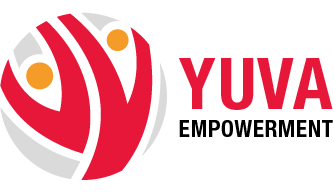The population of India is 1,393,123,813 at present. If we distribute the population according to age, we will have 26.63 percent of the population falling in the 0-14 years category, 67 percent in the 15 – 64 category, and over 6.38 percent in 65 years old or beyond. Upon inductive reasoning, we can assume that the majority of the population in India are youngsters or youths. India is one of the largest countries in the world hence the increase in population is constant. Though this ever-growing population took its threshold after a slump that occurred in the year 1970. A country with such youth density is a blessing and a curse because fulfilling even the basic needs is a challenge for many. Education, nutrition, security are some of the basic necessities which as an adult, is a responsibility to provide for the offspring. Economic and social development is very much necessary in the 21st century. And a well-educated society can produce such developments. For the year 2018, as per the Annual Status of Education Report, the number of students who did not enroll in schools due to the financial crisis came down to 2.8%. Though this is an appreciable improvement in India, the fact that we all forget to see is that this report accounts for the kids who fall into the age distribution group of 6-14 years old who will be in the grades 1 to 8. The Indian education system is a division of three major categories. From grade 1 to 4, we named it lower primary school, from grade 5 to 8 it is upper primary school. Clubbing these together, primary schools are for students where they are taught the syllabus from grade 1 to 8. We can say more than 95% of the students attend primary education, but the adolescents who attend secondary education (grade 9 – 12) fall to 60%. India has not made it to the top 34 education systems in the world. When we conduct a deep root analysis, several hindrances stop the Indian education system from becoming one of the top-notch systems of the world.
- Outdated syllabus
- Rote learning
- No freedom for innovation
- Job is the only goal

These are the few reasons that lower the standards of Indian Education. Some facts prove that Indian education is still in need of some progress. India holds only one Nobel Prize in the field of science, global innovation index we are at out of 130, globalization index rank 78th (slides over 16 spots in the last decade), Indian education sector rank is 92. But education is the most important growth for any kid in the society, and the government is aware of the backlog India holds on to, many schemes have been imposed by the central government, which holds accountability to every state.
-
Sarva Shiksha Abhiyan:
-
Kasturba Gandhi Balika Vidyalaya:
-
Mid-Day Meal Scheme:
-
Scheme of ICT
-
Quality Improvement in Schools
-
Strengthening of Teachers’ Training Institutions:

Other than the schemes provided by the government in terms of enhancing education, there are several different schemes for youngsters in India.
-
Financial Empowerment Scheme (PMJYD):
-
Personal Accident Protection Scheme (PMSBY):
-
Small And Micro Industries Development Scheme (PMMY):

